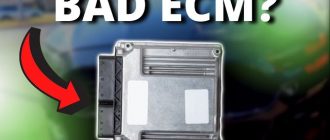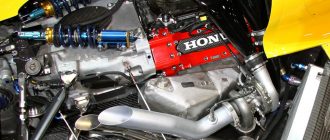## How to Find the Engine Size of Your Car
Introduction
The engine size of a car is an important specification that can have a significant impact on the vehicle’s performance, fuel efficiency, and overall driving experience. It refers to the volume of the combustion chambers in the engine’s cylinders, typically measured in liters or cubic inches. Knowing the engine size is essential for various reasons, such as:
* Comparing engine specifications between different car models
* Understanding the potential fuel consumption and emissions
* Determining the suitability for specific driving requirements
* Troubleshooting engine-related issues
Methods to Find the Engine Size
There are several ways to find the engine size of your car:
1. Vehicle Information Sticker (VIN Sticker)
* Locate the VIN (Vehicle Identification Number) sticker inside the driver’s door jamb or under the hood.
* Look for the “Engine” section on the sticker.
* The engine size will be indicated by a three-digit code. The first digit represents the number of cylinders, and the following two digits indicate the displacement in cubic centimeters.
* For example, a code of “V6 350” signifies a V6 engine with a displacement of 350 cubic centimeters.
2. Engine Specifications Online
* Search for your car’s make, model, and year on reputable automotive websites or forums.
* Check the vehicle specifications section for the engine size, which is typically listed in liters or cubic inches.
3. Owner’s Manual
* Refer to your vehicle’s owner’s manual.
* The engine specifications should be included in the technical data or specifications section.
* The engine size may be listed in liters or cubic inches.
4. Engine Block and Intake Manifold
* Open the hood and locate the engine block.
* Look for a small metal plate or sticker on the engine block or intake manifold.
* The plate may contain the engine size information, such as “3.0L” or “192ci.”
5. VIN Decoder Website
* Use a VIN decoder website or app to decode your car’s VIN.
* Enter the VIN and search for the engine size information.
6. Service Center or Mechanic
* Contact your local service center or a certified mechanic.
* Provide them with your car’s information, and they can look up the engine size for you.
Interpreting Engine Size Data
* When the engine size is provided in liters, it represents the volume of the combustion chambers in cubic centimeters (cc) divided by 1,000.
* For example, a 3.0L engine has a displacement of 3,000cc.
* If the engine size is given in cubic inches (ci), it represents the volume of the combustion chambers in cubic inches.
* For example, a 192ci engine has a displacement of 192 cubic inches.
Conclusion
Knowing the engine size of your car is crucial for understanding its capabilities and performance. By following the methods outlined in this guide, you can easily find the engine size information for your vehicle. Whether you need to compare specifications, plan for fuel consumption, or troubleshoot engine-related issues, having this knowledge will empower you to make informed decisions and maintain your car effectively.




